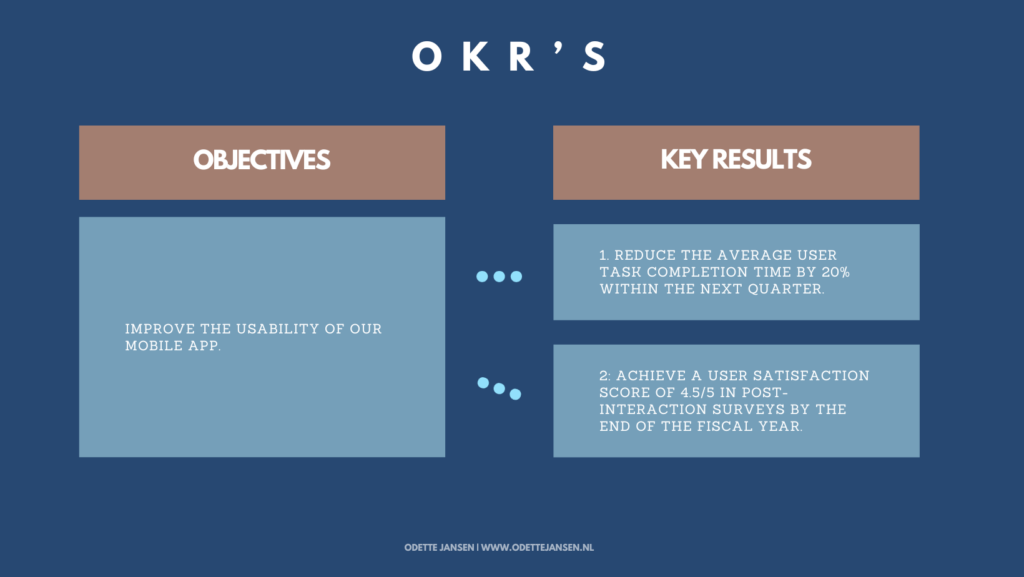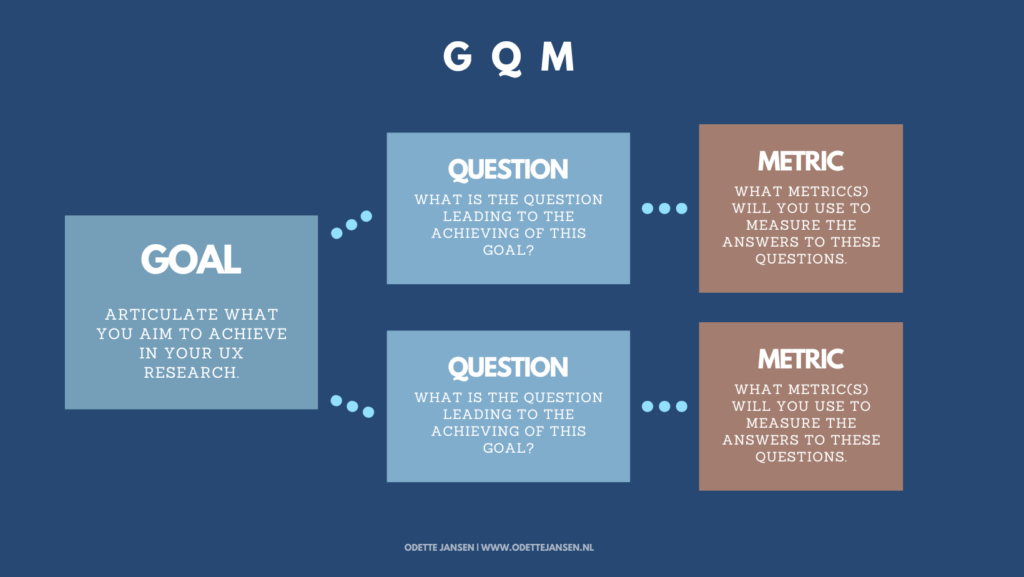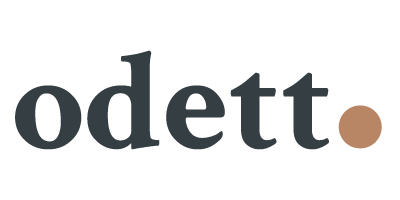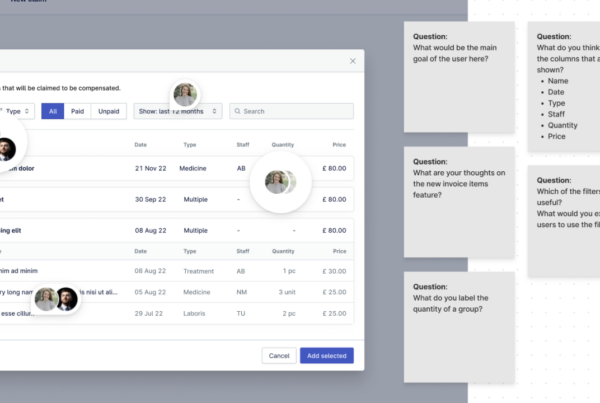Picture this: You’re deep in the throes of a UX research project, surrounded by data, user interviews, and endless testing sessions. Yet, amidst this sea of information, a nagging question persists – “Are we even focusing on the right things?” This is a common dilemma faced in the world of UX research, where the abundance of possible avenues often leads to a scattergun approach, diluting the impact of our efforts.
Enter the unsung hero of UX research – Learning Goals. These are essential tools in UX research. They go beyond being just items on your research plan; they provide a focused direction and ensure that your research efforts lead to meaningful insights. But what exactly are learning goals, and how do they differ from the more commonly talked about research hypotheses? More importantly, how can they transform the way we conduct UX research?
This article aims to answer these questions. We’ll explore the nuances of learning goals and their significance in refining and enhancing the UX research process. Whether you’re a seasoned professional or new to the field, understanding how to effectively set and apply learning goals can be a game-changer in your research journey. Lets take a look at the process of defining and using learning goals to enhance the quality and relevance of your research outcomes.
Understanding learning goals in UX research
In the landscape of UX research, learning goals serve as the foundation for any successful project. But what exactly are these goals, and how do they anchor the entire research process?
Defining learning goals
Learning goals in UX research are specific objectives that define what researchers aim to understand or uncover about user experience. Unlike broad project objectives, learning goals are more targeted, focusing on particular aspects of user interaction, behavior, or perception. They guide researchers in deciding what data to collect, which methodologies to use, and how to interpret findings.
For instance, a learning goal might be to understand why users struggle with a particular feature in an app. This goal directs the researcher’s attention and efforts towards gathering data around user interactions with that feature, rather than dispersing efforts across the entire app.
Learning goals vs hypotheses: what’s the difference?
While often used interchangeably with research hypotheses, learning goals are distinct. A research hypothesis is a specific, testable prediction about a relationship or outcome. For example, a hypothesis might state, “If we simplify the navigation menu, user engagement will increase by 20%.” On the other hand, a learning goal is broader and exploratory, such as “Identify user pain points in navigating the menu.”
Why learning goals matter
Learning goals are crucial for several reasons in UX research. They bring clarity and focus, reducing the risk of going off track amidst the vast data and possibilities inherent in UX projects. With clear learning goals, research efforts become more strategic, efficient, and aligned with user needs and business objectives. Moreover, learning goals facilitate better stakeholder communication and alignment. They ensure everyone involved understands what the research aims to achieve, leading to more cohesive and effective collaboration.
In practice
In practical terms, setting learning goals involves understanding the user, the product, and the business context. It’s about asking the right questions: What do we need to learn about our users? What insights will drive product improvement? How can our research align with broader business goals?
The impact of well-defined learning goals
The significance of well-crafted learning goals in UX research cannot be overstated. They not only provide direction but also enhance the overall quality and effectiveness of the research. Let’s examine how well-defined learning goals can make a substantial difference.
1. Focus and relevance
One of the primary benefits of learning goals is the focus they bring to UX research. With clear goals, researchers can zero in on what matters most, avoiding the common pitfall of getting lost in irrelevant data or tangential lines of inquiry. This focus ensures that every aspect of the research is aligned with understanding specific user behaviors or improving certain elements of the user experience.
2. Efficiency and resource allocation
Efficient use of time and resources is crucial in UX research. Learning goals allow teams to allocate their efforts and resources more effectively, ensuring that they are not wasting time on areas that do not contribute to the overall objectives. This efficiency is particularly valuable in fast-paced environments or projects with limited resources.
3. Measurable outcomes
Learning goals provide a benchmark for measuring the success and impact of UX research. By setting specific and achievable goals, researchers can quantitatively and qualitatively assess whether their findings are meeting these objectives. This measurability is key to demonstrating the value of UX research to stakeholders and guiding continuous improvement.
4. Stakeholder engagement and communication
Clear learning goals also improve communication with stakeholders. When everyone involved has a common understanding of what the research aims to achieve, it becomes easier to align expectations and collaborate effectively. This alignment is essential for ensuring that the research findings are actionable and directly contribute to improving the product and user experience.
5. Informed decision-making
Well-defined learning goals guide decision-making throughout the UX research process. From choosing the right research methods to interpreting data and implementing findings, every decision can be traced back to how it helps achieve these goals. This approach leads to more informed and strategic decisions that are directly tied to enhancing the user experience.
Frameworks for designing learning goals for UX research
In UX research, setting effective learning goals is crucial for driving impactful outcomes. To craft effective learning goals in UX research, you can utilize various frameworks. These frameworks provide a structured approach, making the process more manageable and effective. Let’s explore how to utilize threel frameworks, Impact Mapping, OKRs (Objectives and Key Results), and the GQM (Goal-Question-Metric) approach, to craft meaningful learning goals.
1. Impact Mapping: Uncovering the influences on your goals
Impact Mapping is a strategic planning tool that helps in identifying the various factors affecting your research goals. It’s chosen for its holistic approach to understanding the influences and actors relevant to your goals.
- Why: Define the change or improvement your research aims to achieve.
- Who: Identify who can affect or be affected by your goals (users, stakeholders).
- How: Determine how these actors can influence your goals.
- What: Decide what actions or research activities will align with these influences.

Why It’s Effective: Impact Mapping provides a visual and clear method to connect your research activities directly with the desired outcomes. It ensures that every aspect of your research is purpose-driven and tied to real-world impacts.
How to measure impact: Impact Mapping helps in visually connecting research actions to their outcomes. By tracing the path from ‘What’ actions you undertake, through ‘How’ they influence stakeholders, to the ultimate ‘Why’ of your goals, you can clearly see and measure the impact of each action. This makes it easier to identify which strategies are most effective and where adjustments are needed.
Example: If your goal is to improve the accessibility of a website, your impact map can show how specific design changes (What) influence user experience (How) and contribute to the broader goal of enhanced accessibility (Why).
2. OKRs (Objectives and Key Results): Aligning goals with measurable outcomes
OKRs are a goal-setting framework that combines qualitative objectives with quantifiable key results. This framework is chosen for its focus on setting ambitious, yet achievable goals that are directly measurable.
- Objectives: Set aspirational, qualitative goals aligned with your research’s broader aims.
- Key Results: Establish specific, measurable outcomes to track the achievement of each objective.

Why It’s Effective: OKRs foster a results-oriented culture in UX research. They ensure that the goals are not only clearly defined but also accompanied by concrete metrics that indicate success, making them ideal for measuring the impact of your research.
How to measure impact: OKRs are particularly powerful for impact measurement due to their emphasis on Key Results, which are quantifiable and time-bound. These key results are direct indicators of whether the Objectives (and therefore the learning goals) are being met.
Example: For an objective like enhancing user engagement, a key result could be increasing user session time by a specific percentage. Achieving or progressing towards this Key Result is a clear measure of the impact of your UX efforts.
3. GQM (Goal-Question-Metric): Structuring research for measurable insights
The GQM approach is about setting goals and then systematically breaking them down into questions and metrics. It’s chosen for its ability to turn high-level research goals into actionable, measurable elements.
- Goal: Articulate what you aim to achieve in your UX research.
- Question: Develop questions that will lead to achieving this goal.
- Metric: Identify metrics to measure the answers to these questions.

Why It’s Effective: GQM helps in ensuring that every part of the UX research is directly contributing to the overarching goals. By breaking down goals into questions and metrics, it makes the process of achieving and measuring these goals much more manageable and clear.
How to measure impact: The GQM approach breaks down each goal into specific questions and metrics, providing a systematic way to measure if and how well the goals are being met. These metrics offer concrete data points to evaluate the impact of the research.
Example: If a goal is to reduce the number of user errors in a task, the corresponding metric might be the error rate before and after implementing a new design. This metric directly reflects the impact of the design changes on user experience.
These frameworks – Impact Mapping, OKRs, and GQM – provide structured and effective ways to set learning goals in UX research. They ensure that the goals are not only well-defined but also measurable and directly tied to the research’s broader objectives and outcomes. Applying these methods in your UX research will lead to a more focused, efficient, and impactful research process.
Incorporating learning goals in different phases of UX research
Effectively incorporating learning goals into each phase of UX research is key to ensuring that the research is focused, relevant, and impactful. Here’s a step-by-step guide on how to integrate these goals from the initial planning stage to the final analysis and reporting.
1. Initial planning and definition phase
- Identifying Learning Goals: At the onset of your UX research project, clearly define your learning goals. This should be based on the project’s objectives, user needs, and business requirements.
- Action Step: Collaborate with stakeholders and team members to establish these goals. Ensure that they are specific, measurable, and aligned with the broader aims of the project. Also make sure that everyone working on the project has a clear understanding of these goals.
2. Research design and methodology selection
- Aligning Methods with Goals: Choose research methods and tools that are best suited to achieve your learning goals. For example, if your goal is to understand user behavior, methods like user observation or contextual inquiry might be more appropriate.
- Action Step: Map each learning goal to suitable research methods. This ensures that the methodologies you choose are directly contributing to your goals.
3. Data collection phase
- Guided Data Collection: While collecting data, keep your learning goals at the forefront. This ensures that you gather data that is relevant and useful for achieving these goals.
- Action Step: Regularly review your data collection processes and outputs to ensure alignment with your learning goals.
4. Analysis and synthesis
- Goal-Oriented Analysis: Analyze the collected data with your learning goals in mind. This helps in extracting relevant insights and avoiding information overload.
- Action Step: During analysis, continuously refer back to your learning goals to evaluate whether the data supports or provides insights towards these goals.
5. Reporting and communication
- Communicating Insights: When reporting your findings, clearly articulate how they relate to and address the learning goals. This enhances the relevance and impact of your research findings.
- Action Step: Structure your reports and presentations around your learning goals. Use them as a framework to present your findings and recommendations.
6. Iteration and refinement
- Learning and Adapting: UX research is an iterative process. Use the insights gained to refine your learning goals for future research cycles.
- Action Step: After each research cycle, review and adjust your learning goals based on what you’ve learned and any changes in project objectives or user needs.
Creating learning goals for generative vs. evaluative UX research
While the frameworks and principles for crafting learning goals in UX research are broadly applicable, it’s important to tailor these goals based on the type of research you’re conducting. Let’s delve into the nuances of setting learning goals in generative (exploratory) and evaluative (validation) UX research.
Generative UX research: exploring and understanding
- In generative UX research, our objective is to generate new ideas and understandings. This type of research is exploratory in nature and often takes place at the beginning of the design process or when venturing into new user segments.
- Learning goals focus: Here, learning goals should be open-ended and broad. They are aimed at uncovering user behaviors, needs, and motivations. For example, a goal might be “To explore the primary concerns of first-time users of our mobile banking app.”
- Characteristics: These goals are about qualitative discovery. They prioritize depth of understanding over quantifiable metrics, guiding researchers to uncover the ‘why’ behind user interactions and preferences.
Evaluative UX research: testing and validating
- Evaluative research, on the other hand, is about assessing the design’s usability and effectiveness. Typically conducted later in the design process, it focuses on refinement and validation.
- Learning goals focus: For evaluative research, goals need to be more specific and tightly focused. They often concentrate on usability, efficiency, or user satisfaction with a particular aspect of the product. A typical goal could be “To assess the efficiency of the new navigation layout in reducing task completion time.”
- Characteristics: These goals are quantifiable and specific. They revolve around measurable outcomes, identifying usability issues, and validating whether the design meets the intended user needs and objectives.
Integrating Both Approaches
- In many UX projects, you’ll find a blend of both generative and evaluative research. It’s crucial to define your learning goals in a way that they align with the specific stage and purpose of your research. This ensures that your research efforts are focused, relevant, and effectively drive the design process forward.
Conclusion
In conclusion, mastering the craft of setting strategic learning goals is essential for guiding and assessing the effectiveness of UX research. From the broad explorations in generative research to the focused assessments in evaluative studies, these goals are key to ensuring your research is both purposeful and impactful. Well-articulated learning goals not only steer the research journey but also serve as vital indicators of its success, showcasing the real value of your efforts in UX.




